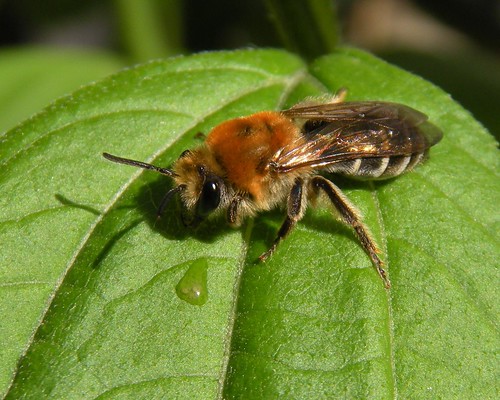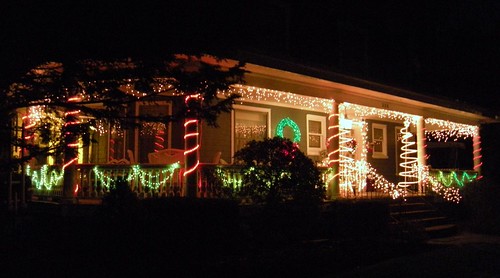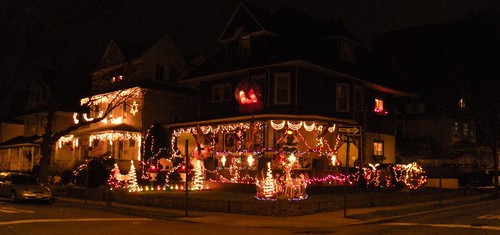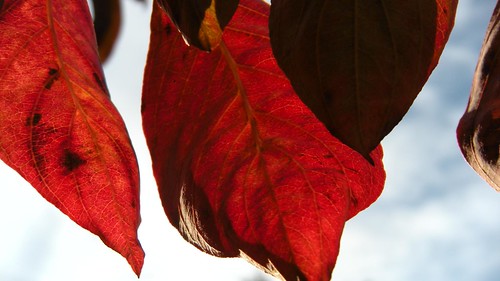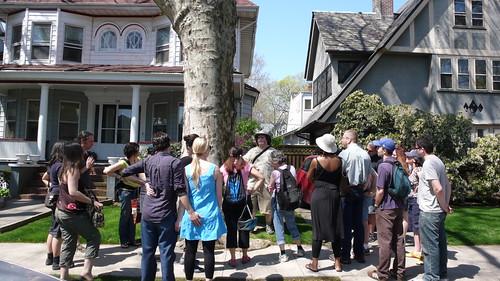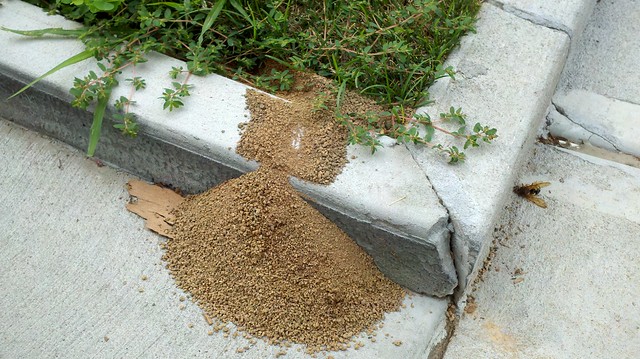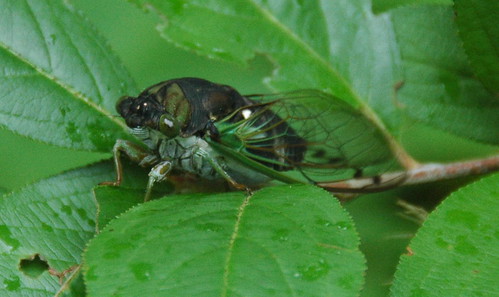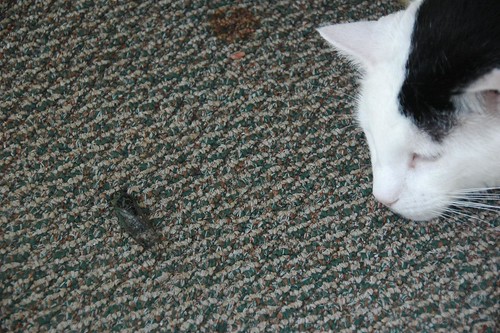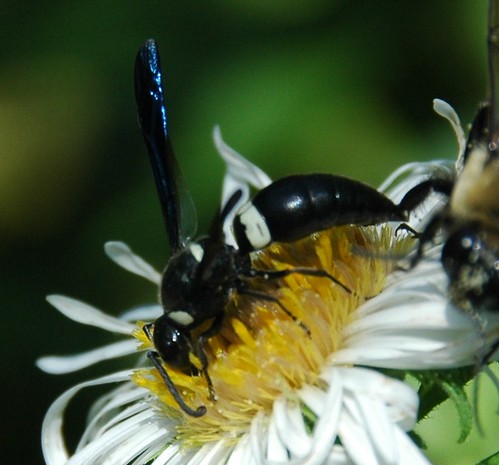Colletes thoracicus, Cellophane Bee, is a native species of solitary, ground-nesting bees. Solitary, because each nest is burrowed out by a single queen, who constructs several chambers in which to lay individual eggs. Solitary, yet communal: where they find the right conditions, the nests can be densely packed.Here’s a short video showing the activity on Saturday morning.
This is the third year for what I’ve come to think of as “my little bees.” I noticed the holes earlier last week, and saw all this activity last Saturday, as I was readying for the Plant Swap. This is the earliest in the year that I’ve noticed them.
Make Your Garden Bee-Friendly
These bees took up residence in a “neglected” spot of the garden, one of the benefits of being a lazy gardener/ecosystem engineer. Different species of bees have different requirements. Here are some things you can do to make your garden bee-friendly.
- Avoid chemicals, especially pesticides.
- Leave some areas of bare or muddy ground for ground-nesting species.
- Set aside “wild” areas, even a few square feet.
- Provide bee nesting houses.
- Forego that perfect lawn, minimize lawn area, and/or mow less often.
- Plant a diversity of flowering plants; bees prefer yellow, blue, and purple flowers.
- Provide a succession of blooming plants throughout the growing season, especially early spring and late fall.
- Provide a mix of flower shapes to accommodate different bee tongue lengths.
- Emphasize native perennial plants. (See plant lists under Links below.)
- Minimize the use of doubled flowers.
- Select sunny locations, sheltered from the wind, for your flower plantings.
- Practice peaceful coexistence.
[goo.gl]
Related Content
Colletes thoracicus (Colletidae), Cellophane Bees, Flickr photo set
Who cares about honeybees, anyway?, 2009-11-04, my guest rant on Garden Rant
Bee Watchers Needed in NYC (and a rant), 2009-06-05
Bees, a Mockingbird, and Marriage Equality, 2009-05-22
Cellophane Bees Return, 2009-05-09
Colletes thoracicus (Colletidae), Cellophane Bees, 2008-05-26
Links
NYC
Great Pollinator Project
Understanding Native Bees, the Great Pollinators
Plant Lists
Regional Plant Lists, PlantNative
Plants Attractive to Native Bees, USDA
Other
Ecoregion Location Maps and Planting Guides, Pollinator Partnership
North American Pollinator Protection Campaign
Urban Bee Gardens, Dr. Gordon Frankie, University of Berkeley
The Xerces Society

